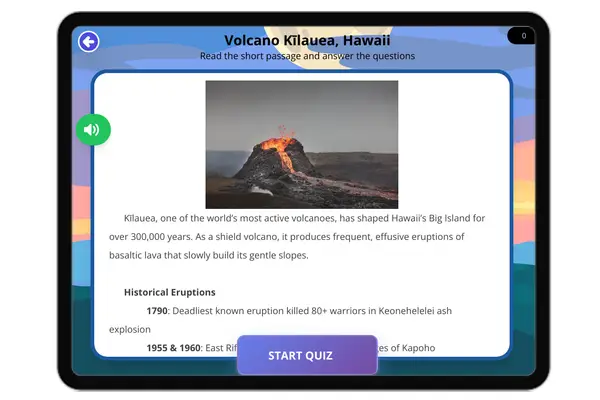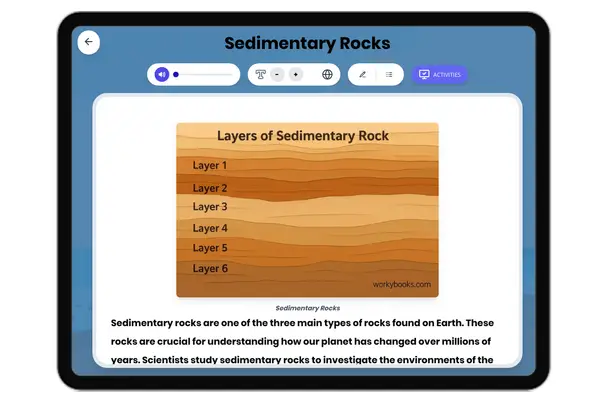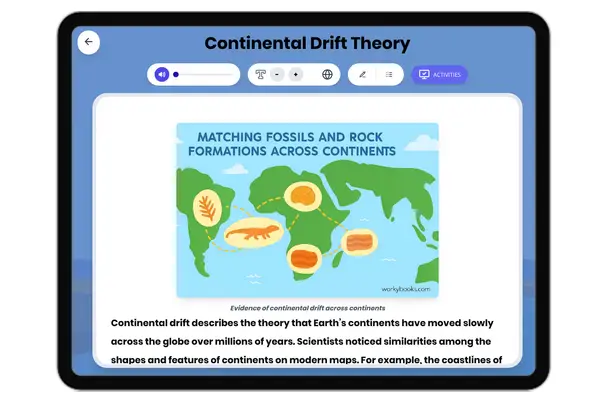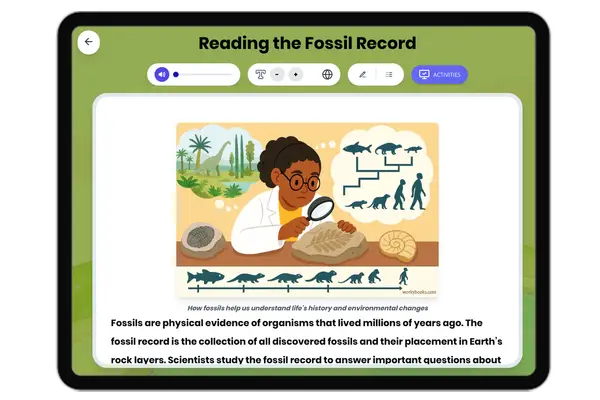Type of Mountain Ranges Formed at Convergent Plate Boundaries — Reading Comprehension
Grades
- 5
- 6
- 7
- 8
Standards
- MS-ESS2-3
- RI.6.1
- RI.7.4
- RI.8.2
PRINT+DIGITAL RESOURCE
This learning resource is available in interactive and printable formats. The interactive worksheet can be played online and assigned to students. The Printable PDF version can be downloaded and printed for completion by hand.
About This Reader
This passage explains how Earth's tallest mountain ranges form at convergent plate boundaries. It details two main formation processes: (1) Fold mountains like the Himalayas and Alps created by continental plate collisions that crumple rock layers upward, and (2) Volcanic mountains like the Andes formed when oceanic plates subduct beneath continental plates, creating magma. The text highlights ongoing growth of ranges like the Himalayas and famous peaks (Everest, Fuji). Aligns with NGSS MS-ESS2-2 (Earth's systems) and CCSS RI.6.5 (text structure). The passage helps students visualize tectonic processes through real-world examples while emphasizing the immense timescales involved in mountain building. Key vocabulary includes subduction, fold mountains, and continental crust.
Perfect For:
👩🏫 Teachers
- • Reading comprehension practice
- • Auto-graded assessments
- • Literacy skill development
👨👩👧👦 Parents
- • Reading practice at home
- • Comprehension improvement
- • Educational reading time
🏠 Homeschoolers
- • Reading curriculum support
- • Independent reading practice
- • Progress monitoring
Reading Features:
📖
Reading Passage
Engaging fiction or nonfiction text
❓
Comprehension Quiz
Auto-graded questions
📊
Instant Feedback
Immediate results and scoring
📄
Printable Version
Download for offline reading
🔊
Read Aloud
Voice-over with word highlighting




















